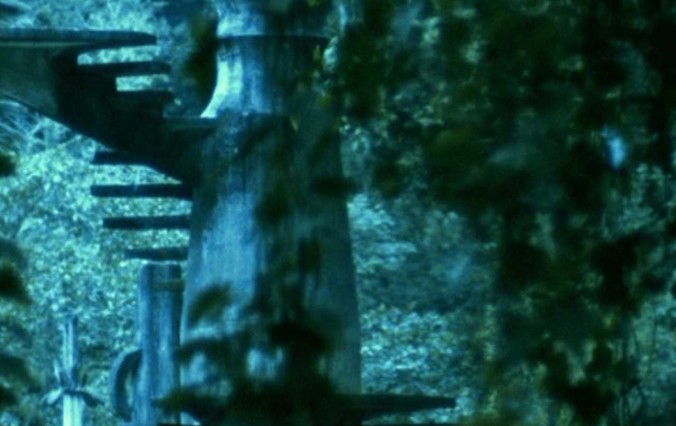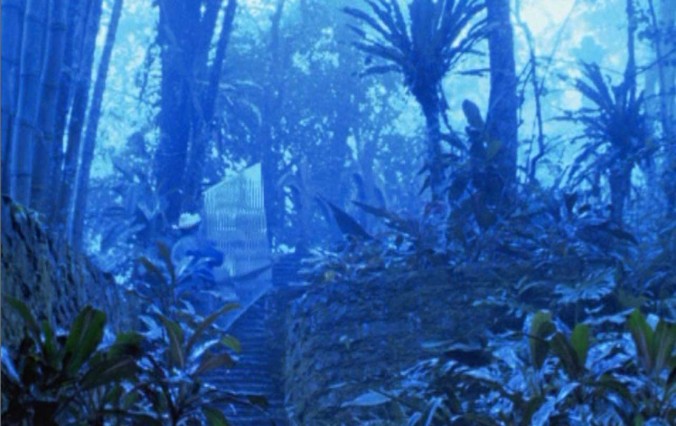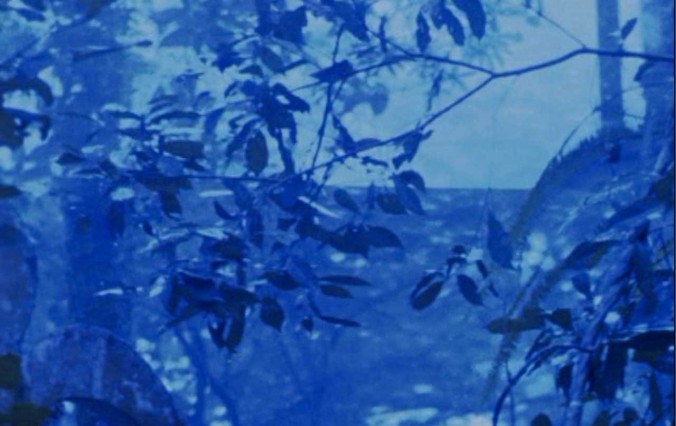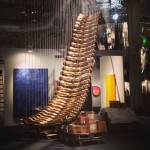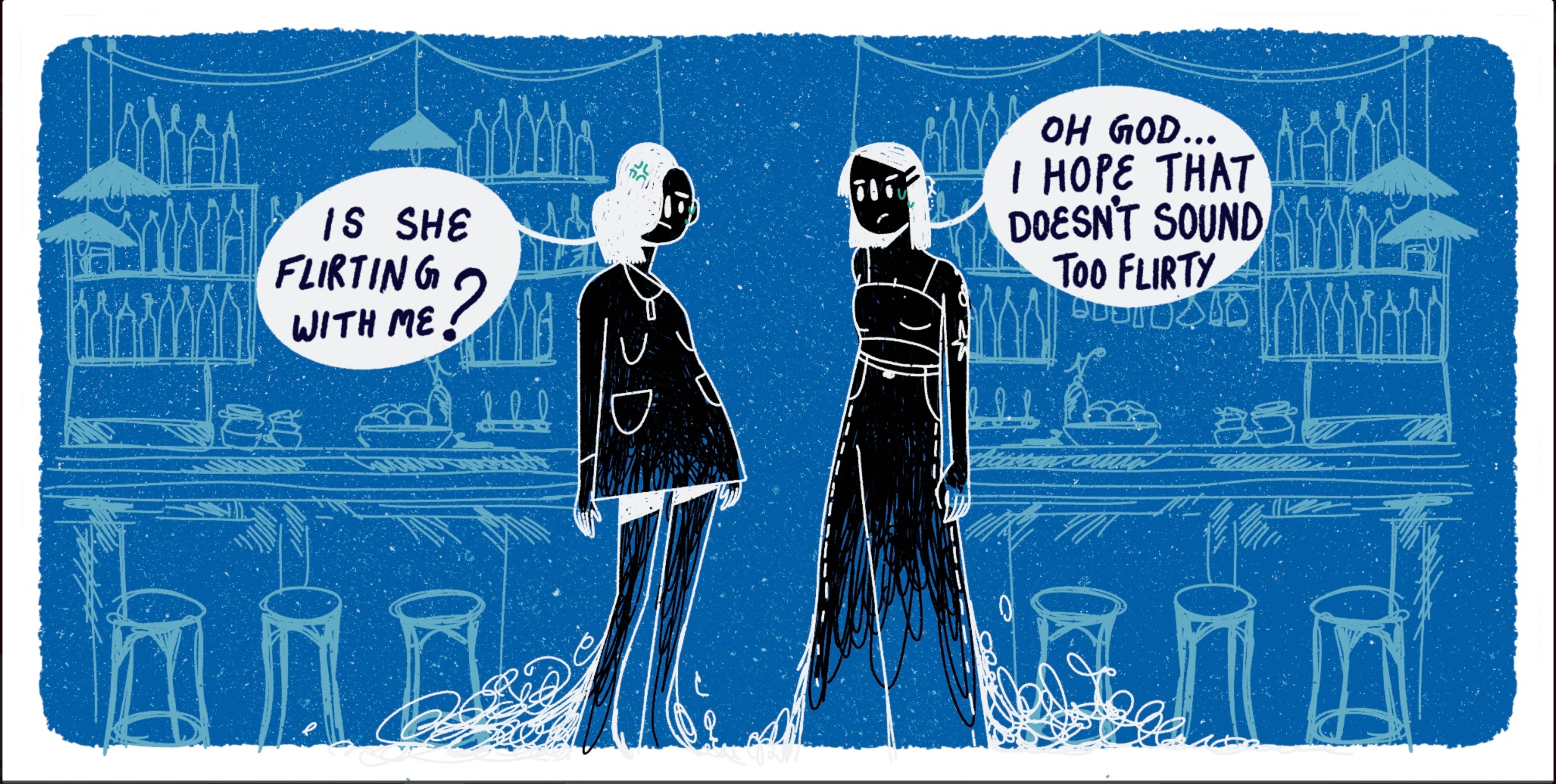Framing The Scattered Jungle Castle of Las Pozas
Nestled away in a subtropical valley of the state of San Luis Potosí in Mexico, Las Pozas is one of the most intriguing architectural endeavors of the 20th century. Imagined by British poet Edward James, this surrealist castle has become the main attraction of the small town of Xilitla. Melanie Smith, a British artist who has lived in Mexico since 1989, dedicated one of her recent works to this fascinating structure.
The construction of the castle, which was initiated in 1949 and spread over twenty years, was never completed. A series of spiral stairways leading to nowhere and cement sculptures in the shape of hands, flowers and snakes are sporadically spread with a radius of two to three kilometers in the lush jungle surroundings. James was a fervent patron of the surrealist movement. He was friends with Remedios Varo; René Magritte painted two portraits of him; he spent time with Dalí at Las Pozas; and Leonora Carrington, yet another British artist who settled in Mexico, collaborated on many of the castle’s structures. Las Pozas, now featured on the UNESCO World Heritage tentative list, embodies the creative genius of James and his artist friends. This rich combination of gothic and surrealist art also draws influence from Gaudi’s aesthetics and the no less extravagant “Ideal Palace” of French postman Ferdinand Cheval. Las Pozas in Xilitla attracts a large number of tourists every year and inspires many contemporary artists living and traveling to Mexico.
Last June, Melanie Smith presented a new version of her film installation “Xilitla” at the Tate Modern in London, followed by a conversation with Professor Dawn Ades and curator Tanya Barson. Smith’s previous film installation “Spiral City (2002)” explored the urban grid of Mexico City in a visual response to Robert Smithson’s earthwork in Salt Lake and his related film “Spiral Jetty.” Smithson’s work also had a visible influence on Melanie Smith’s exploration of visual patterns and land modification in “Xilitla.” Like Smithson’s “Yucatan Mirror Displacements,” also set in Mexico, the presence of moving mirrors carried by the gardeners of Las Pozas explores temporality in the landscape/earthwork relationship. The effect of entropy on the artistic and cultural landscape is the thread linking Smith’s inspiration and Smithson’s earthwork to the subject of her installation, James’ castle. Smith stresses the fact that James built his structure hoping that the surrounding wild vegetation would reclaim it, in effect creating a hybrid masterpiece.
“Xilitla” is a vertical film, a choice of frame and lines that Smith justifies by the characteristic vertical nature of the architecture of Las Pozas. She presents the castle in all its forms and angles: by day, by night, illuminated by fireworks and undergoing maintenance. The predominance of the color blue throughout the film is not only a reference to the gothic elements of the architecture, but also a wish to present James’ castle in a new light, moving away from the overwhelming green of the surrounding jungle. The soundtrack of the film is a curious juxtaposition of silences, sounds of the jungle, voices of the gardener and conversations with collaborating artist Rafael Ortega. The alienation of image and sound — Ortega’s comments, for instance, do not refer to the image being projected — is another way of addressing temporality and illustrating the different dimensions of the structure: human-made, natural, hybrid.
Melanie Smith’s past and present work is linked to a reflection on modernity, its aesthetic-political system and its relation to social experience. She considers the operation of modernity and modernism in Mexico, drawing parallels between this incomplete process of modernization and incomplete artistic structures. “Xilitla,” and its depiction of James’ unfinished castle stands as an example of this particular aesthetic mode. She presents the precarious and incomplete nature of modernity as potential rather than failure.

